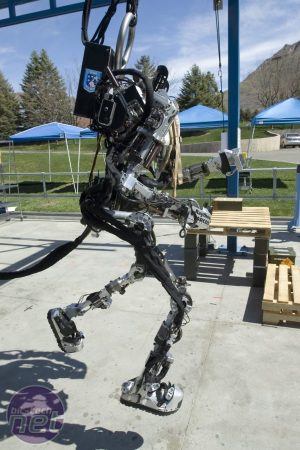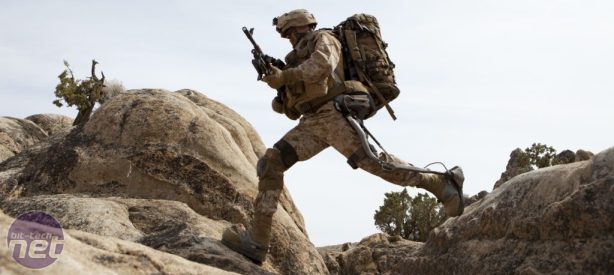Can we build a real high-tech hero?
Take two ordinary guys. OK, scratch ordinary. One is the orphaned son of a murdered billionaire tycoon, the heir to an industrial empire and the most eligible bachelor in Gotham City. At night he dresses up like an oversized bat, and puts his life on the line to fight crime on the city streets. The other sits at the head of the world’s most advanced weapons manufacturer, and is a billionaire playboy and genius inventor. With a heart powered by a cutting-edge reactor and a flying suit of robotic armour, he’s doing his best to privatise world peace. Neither man has any supernatural abilities, genetic mutations or extra-terrestrial super-powers. All they have is training, courage, and some of the hottest technology imaginable.Sadly, imaginable is the operative word - Batman and Iron Man aren’t real. It’s unlikely that we’ll ever see a real-life Tony Stark facing down an army of killer drones or a real-life Bruce Wayne taking down the mob. Frankly, we’d hate to think of what a Steve Jobs (let alone a Steve Ballmer) might do with a real Iron Man suit. But is there any truth behind the tech? If you were to win the Euromillions, would you have any hope of fighting crime on, say, the mean streets of Swindon, or does the stuff just not exist. That’s what we wondered, and on the next few pages, we’re going to find out.

Powered Armour
Bruce Wayne relies on a rack of muscle and stringent combat training to keep him safe, but where would Tony Stark be without high high-tech tin suit? Nowhere. Well, there might be no real Iron Man suit, but that doesn’t mean that work isn’t heading in the right direction.In 2000, America’s Defence Advanced Research Projects Agency (DARPA) launched a program – Exoskeletons for Human Performance Augmentation – with the stated goal of developing “devices and machines that will increase the speed, strength and endurance of soldiers in combat environments.”
Amazingly, the program has resulted in at least two real-life prototypes that might one day see active service. A team at robotics specialist Sarcos – best known for creating the dinosaurs for Universal's Jurassic Park theme park rides - built XOS (pictured left), a robotic suit capable of amplifying its wearer’s strength by a factor of 10:1. If you can lift 10Kg, then the suit will lift 100Kg, and do it over and over again without you getting tired.
The really clever stuff happens in how the suit is controlled. Just as the Iron Man suit needs to work in concert with Tony Stark’s body, so the XOS suit needs to understand its wearer’s every movement. The XOS suit’s actuators are controlled by processors and sensors which read movement from the user’s hands and feet, translating each tiny motion into suit movement, instantly and with a surprising degree of finesse. The exoskeleton takes all but the minimum of weight and effort from its wearer, and is responsive enough to allow them to run, jump, box and even throw and catch a ball. It’s not armoured as such, but it’s certainly a kick-ass bit of kit.
The one problem? At the moment XOS only works when tethered to a power-source, and while it’s hoped that this can eventually be integrated in a case or backpack, with the suit regenerating energy while in use, it’s something that – literally – holds the exoskeleton back from active service.
Lockheed Martin’s HULC might not be a full exoskeleton, but this suit, which reinforces and works with muscles in your legs and torso, allows troops to carry up to 90Kg over all terrains and march at speeds of up to 10mph, albeit only for brief periods.
As the suit supports full mobility, its wearers can squat, crawl and lift, with the suit supporting its own weight as they do so. An over the shoulder harness allows the user to manage heavier loads, and there are plans for armed and armoured models in the future. Best of all, it’s powered by lithium ion batteries, each lasting for an hour or so, depending on usage.
HULC is currently under evaluation by the US Army’s Natick Soldier Research, Development and Engineering Centre, and is already available for what a Lockheed Martin spokesperson calls “limited application in select groups.” Could this be the basis of a future Iron Man suit, we asked them?
“We see significant potential for this technology in the defense, industrial and medical arenas. As a load-carriage device which augments a person’s endurance and capabilities, this technology can be applied to numerous missions including logistics, infantry, explosive ordnance disposal and chemical and biological defense, to name just a few.”
We’ll take that as a yes.

MSI MPG Velox 100R Chassis Review
October 14 2021 | 15:04










Want to comment? Please log in.